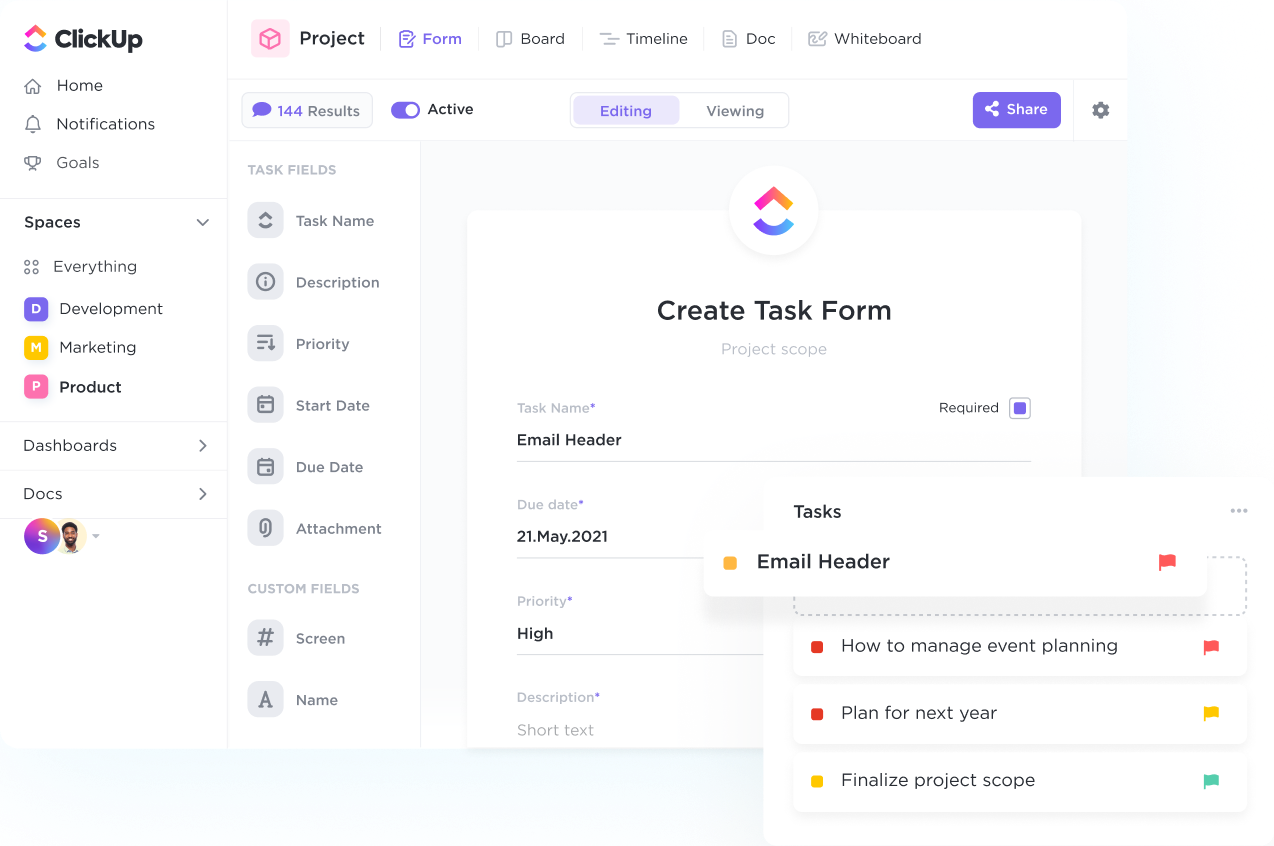See client relationships at a glance.
Manage everything from sales pipelines, customer engagement, and orders with ClickUp's 10+ highly flexible views. Easily track and manage your accounts on a List, Kanban Board, Table view, and more.

Optimize your HVAC company's workflow with a customized CRM system powered by ClickUp. Streamline communication, track customer interactions, and boost sales efficiency all in one place. Experience seamless integration and elevate your customer relationships with ClickUp's user-friendly platform.
Free forever.
No credit card.
Trusted by the world’s leading businesses
Manage everything from sales pipelines, customer engagement, and orders with ClickUp's 10+ highly flexible views. Easily track and manage your accounts on a List, Kanban Board, Table view, and more.

Streamline your intake process, organize response data, and automatically create tasks with custom branded Forms powered by conditional logic.

Lead Tracking and Qualification: Capture leads from various sources, score them based on criteria like project size or urgency, and nurture them through the sales process.
Pipeline Management: Visualize where potential sales are in the pipeline, prioritize hot leads for follow-up, and forecast sales to plan effectively.
Customer Follow-up: Set reminders for follow-up calls or emails, track customer interactions, and ensure timely responses to inquiries.
Service Agreement Management: Keep track of service agreements, renewal dates, and upsell opportunities to maximize revenue from existing customers.
Ticketing System: Manage customer service requests efficiently by assigning tickets, tracking their status, and ensuring prompt resolution.
Maintenance Scheduling: Schedule maintenance appointments, track service history, and send reminders to customers, improving customer satisfaction and retention.
Customer Feedback Analysis: Gather feedback from service visits, analyze trends to improve service quality, and address customer concerns proactively.
Knowledge Base: Create a knowledge base with common HVAC issues and solutions to empower customers to troubleshoot minor problems on their own.
Customer Segmentation: Segment customers based on factors like location, service history, or equipment type to tailor marketing efforts and service offerings.
Performance Metrics Tracking: Monitor key performance indicators such as customer acquisition cost, retention rate, and service response time to optimize operations.
Customer Lifetime Value Analysis: Calculate the lifetime value of customers, identify high-value clients for personalized attention, and prioritize retention efforts.
Marketing ROI Analysis: Track the return on investment for marketing campaigns, identify successful strategies, and allocate resources effectively for future campaigns.
Equipment Tracking: Maintain records of equipment installed at each customer location, track warranties, and schedule maintenance proactively.
Contract Management: Store contract details, renewal dates, and terms for each customer, ensuring timely renewals and compliance with service agreements.
Referral Tracking: Track referrals from existing customers, incentivize referrals through rewards, and measure the effectiveness of referral programs.
Cross-selling Opportunities: Identify cross-selling opportunities based on customer needs, service history, or upcoming projects, increasing revenue per customer.
CRM software can help HVAC companies streamline their customer management processes by organizing customer information, tracking service histories, scheduling appointments efficiently, and enabling personalized communication for better customer relationships and service delivery.
Key features and functionalities that HVAC companies should look for in a CRM software include robust customer database management, scheduling and dispatch tools, service contract management, equipment tracking, and invoicing capabilities.
CRM software can help HVAC companies improve their sales and lead generation efforts by organizing customer information, automating follow-ups, tracking leads, and providing insights for targeted marketing campaigns.